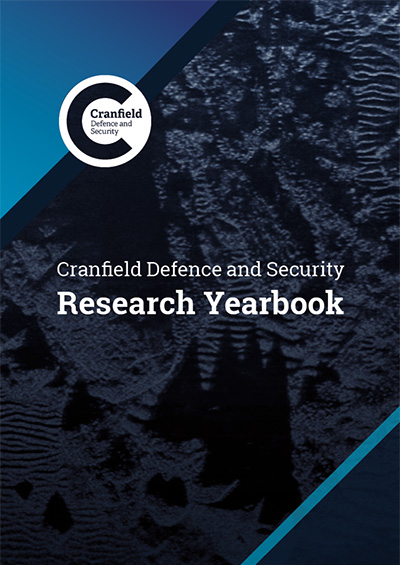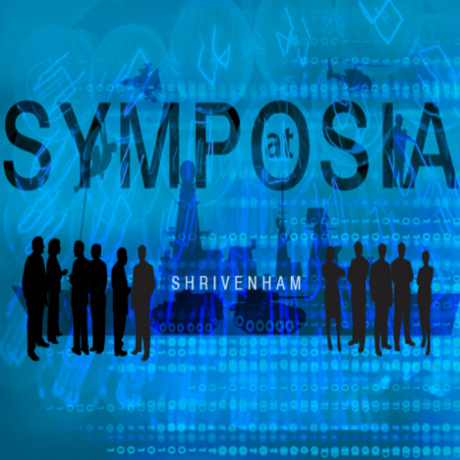Overview
- Start dateSeptember
- DurationPgCert: up to 11 months full-time, up to two years part-time
- DeliveryLectures, laboratory demonstrations and tutorials
- QualificationPgCert
- Study typeFull-time / Part-time
- CampusCranfield University at Shrivenham
Who is it for?
The course is intended for officers of the armed forces and for scientists and technical officers in government defence establishments and the defence industry. It is particularly suitable for those who, in their subsequent careers, will be involved with the specification, analysis, development, technical management or operation of military radar, electro-optics, communications, sonar or information systems, where the emphasis will be on an electronic warfare environment.
Why this course?
A Military Electronic Systems Engineering graduate achieves a high level of understanding and detailed knowledge of military communications and sensor systems with particular regard to electronic warfare. In addition, the MSc course enables the student to carry out an in-depth investigation into an area of electronic warfare to further enhance their analytical capability. Successful graduates of this course should be fully equipped for roles in defence intelligence, systems development and acquisition, involving the specification and analysis of such systems, working individually or as part of a team.
A comprehensive suite of visits to industrial and services establishments consolidates the learning process, ensuring the taught subject matter is directly relevant and current. Some visits are restricted to Five Eyes nations only (i.e. Aus/Can/UK/US/NZ). Please contact us for more information.
Course details
The PgCert will comprise six core modules accumulating 60 credits; after successful completion the award of PgCert Military Electronic Systems Engineering: Foundations is available.
The MSc/PgDip taught phase comprises 10 compulsory modules and a choice of either Information Networks and Advanced Radar, or Aeronautical Engineering Parts 1 and 2.
MSc students must complete a taught phase consisting of 12 modules, followed by an individual dissertation in a relevant topic. PgDip students must complete a taught phase consisting of 12 modules. PgCert students must complete a taught phase consisting of six specified modules.
Course delivery
Lectures, laboratory demonstrations and tutorials
Modules
Keeping our courses up-to-date and current requires constant innovation and change. The modules we offer reflect the needs of business and industry and the research interests of our staff and, as a result, may change or be withdrawn due to research developments, legislation changes or for a variety of other reasons. Changes may also be designed to improve the student learning experience or to respond to feedback from students, external examiners, accreditation bodies and industrial advisory panels.
To give you a taster, we have listed the compulsory and elective (where applicable) modules which are currently affiliated with this course. All modules are indicative only, and may be subject to change for your year of entry.
Course modules
Compulsory modules
All the modules in the following list need to be taken as part of this course.
Electromagnetic Propagation and Devices
| Aim |
To provide you with an understanding of electromagnetic propagation, antennas and devices relevant to military sensor, communications and electronic warfare systems. |
|---|---|
| Syllabus |
|
| Intended learning outcomes |
On successful completion of this module you will be able to:
|
Signal Processing, Statistics and Analysis
| Aim |
To provide you with an understanding of the subjects supporting the specialist modules and to provide you with the essential signal analysis and statistical tools used in the course. |
|---|---|
| Syllabus |
|
| Intended learning outcomes |
On successful completion of this module you will be able to:
|
Electro-Optics and Infrared Systems 1
| Aim |
To introduce the you to the field of EO/IR technology and give an understanding the underlying principles. To give an appreciation of the likely future advances in the technology and the importance of EO/IR technology in the wider defence system. |
|---|---|
| Syllabus |
|
| Intended learning outcomes |
On successful completion of this module you will be able to:
|
MES-CP - Communications Principles
| Aim |
To provide you with an understanding of the concepts and techniques employed in modern communication systems. |
|---|---|
| Syllabus |
|
| Intended learning outcomes |
On successful completion of this module you will be able to:
|
Radar Principles
| Aim |
To provide you with an understanding of the fundamental principles of radar, allowing you to relate this to the design and analysis of radar systems. |
|---|---|
| Syllabus |
|
| Intended learning outcomes |
On successful completion of this module you will be able to:
|
Communications Systems
| Aim |
To provide the you with an understanding of how modern military and commercial communications systems utilise the principal techniques taught during the communications principles module. |
|---|---|
| Syllabus |
|
| Intended learning outcomes |
On successful completion of this module you will be able to:
|
Teaching team
You will be taught by Cranfield's leading experts with many years' industrial experience, including:
Your career
This course is typically a requirement for progression for certain engineering and technical posts within UK MoD.
Successful graduates of this course should be fully equipped for roles in defence intelligence, systems development and acquisition, involving the specification and analysis of such systems, working individually or as part of a team either in the military or in the defence industry.
How to apply
To apply for this course please use the online application form.











